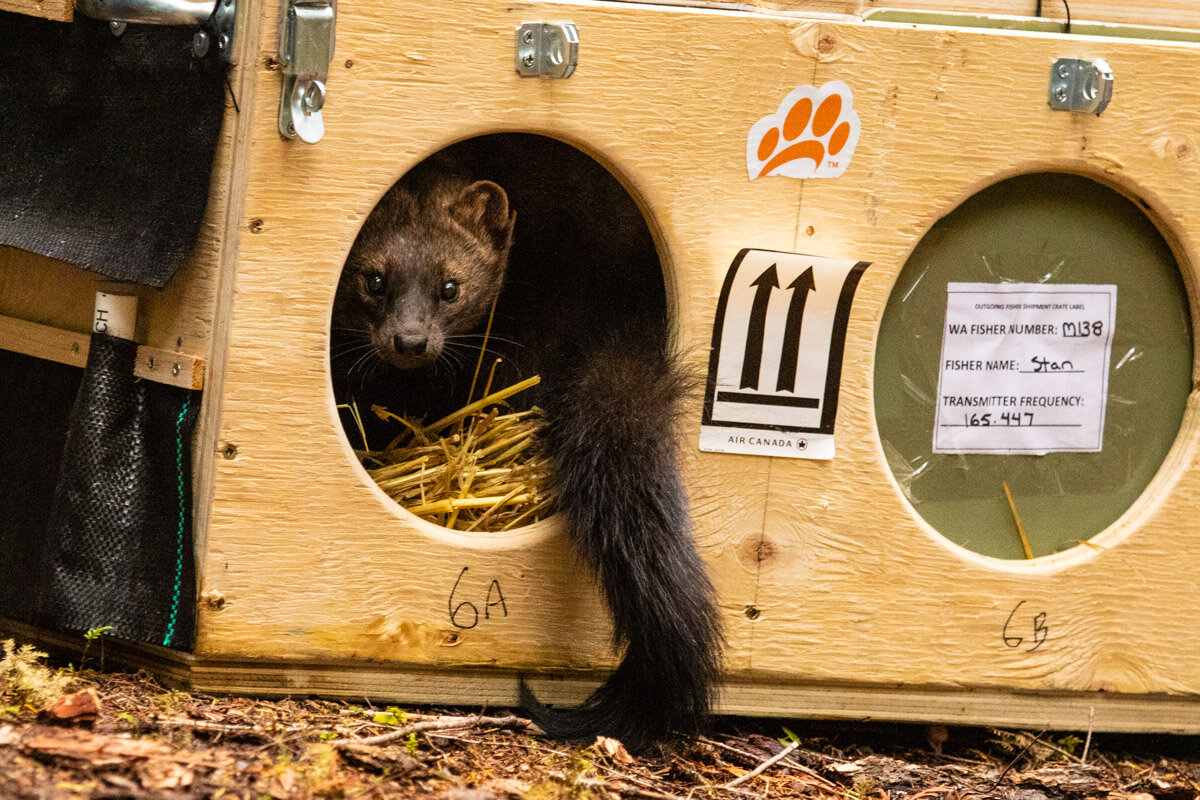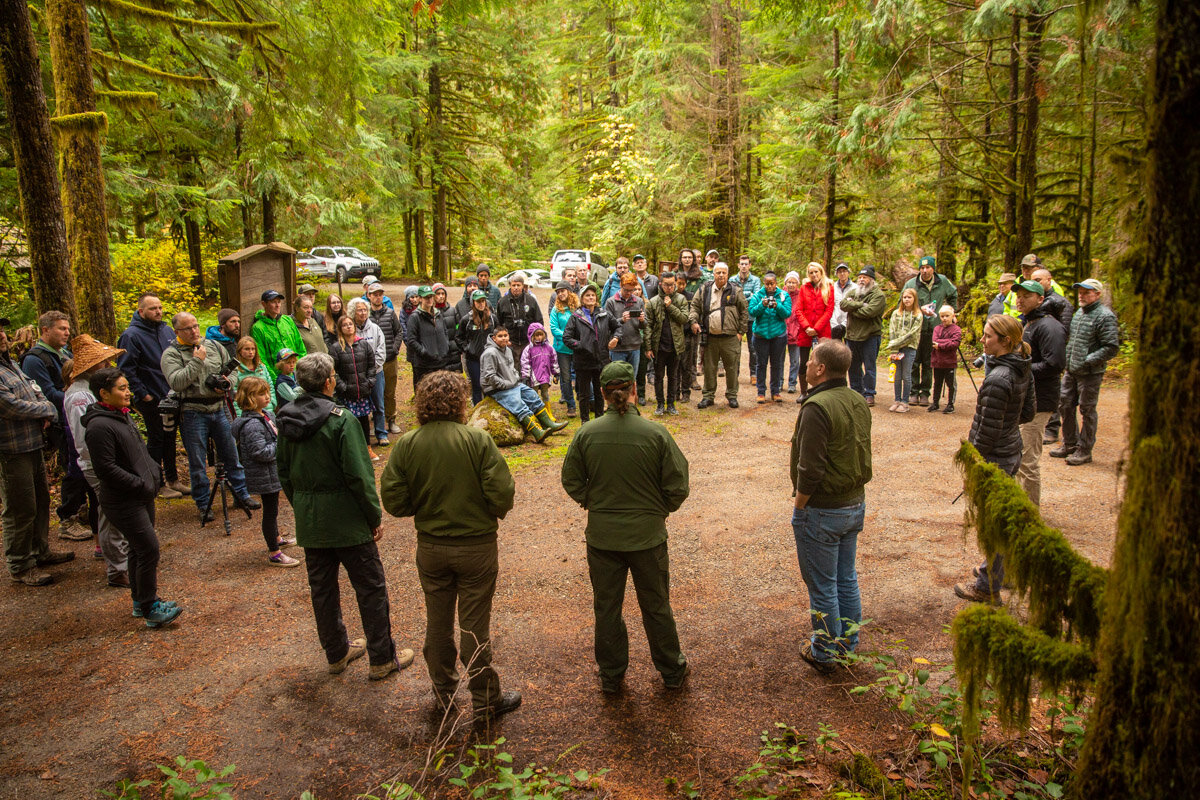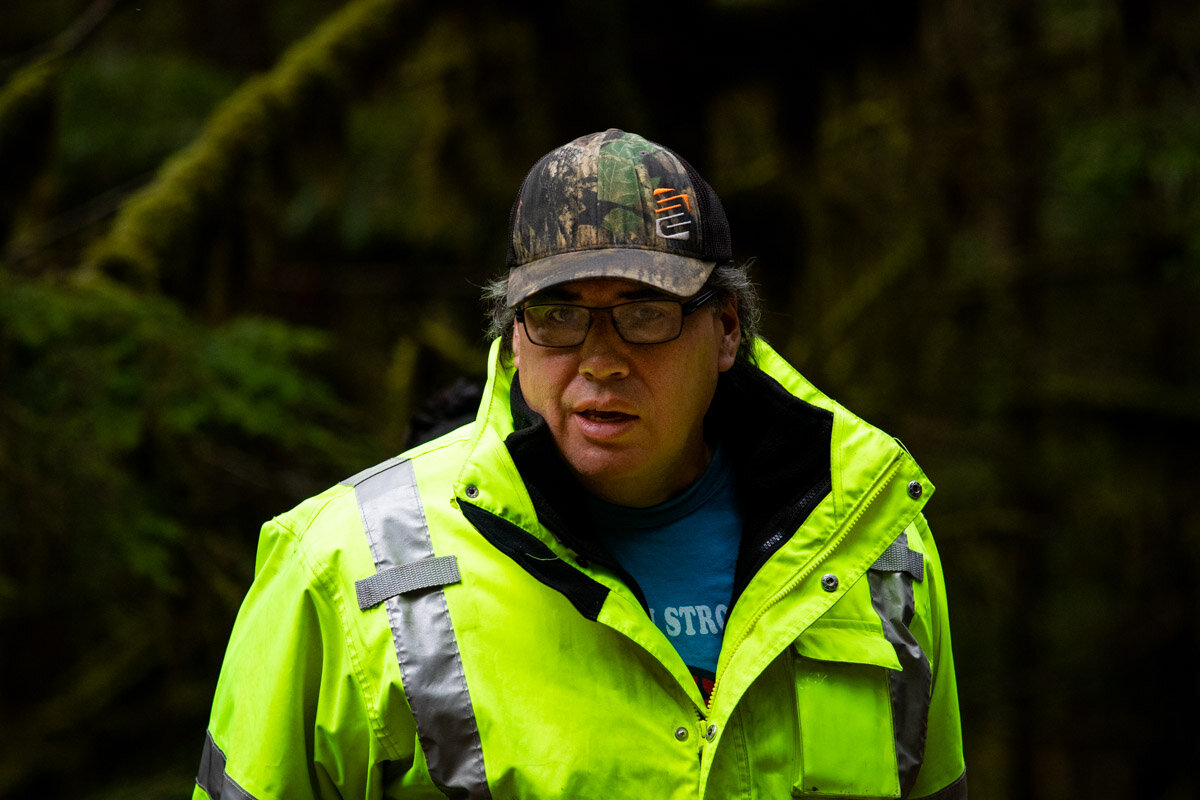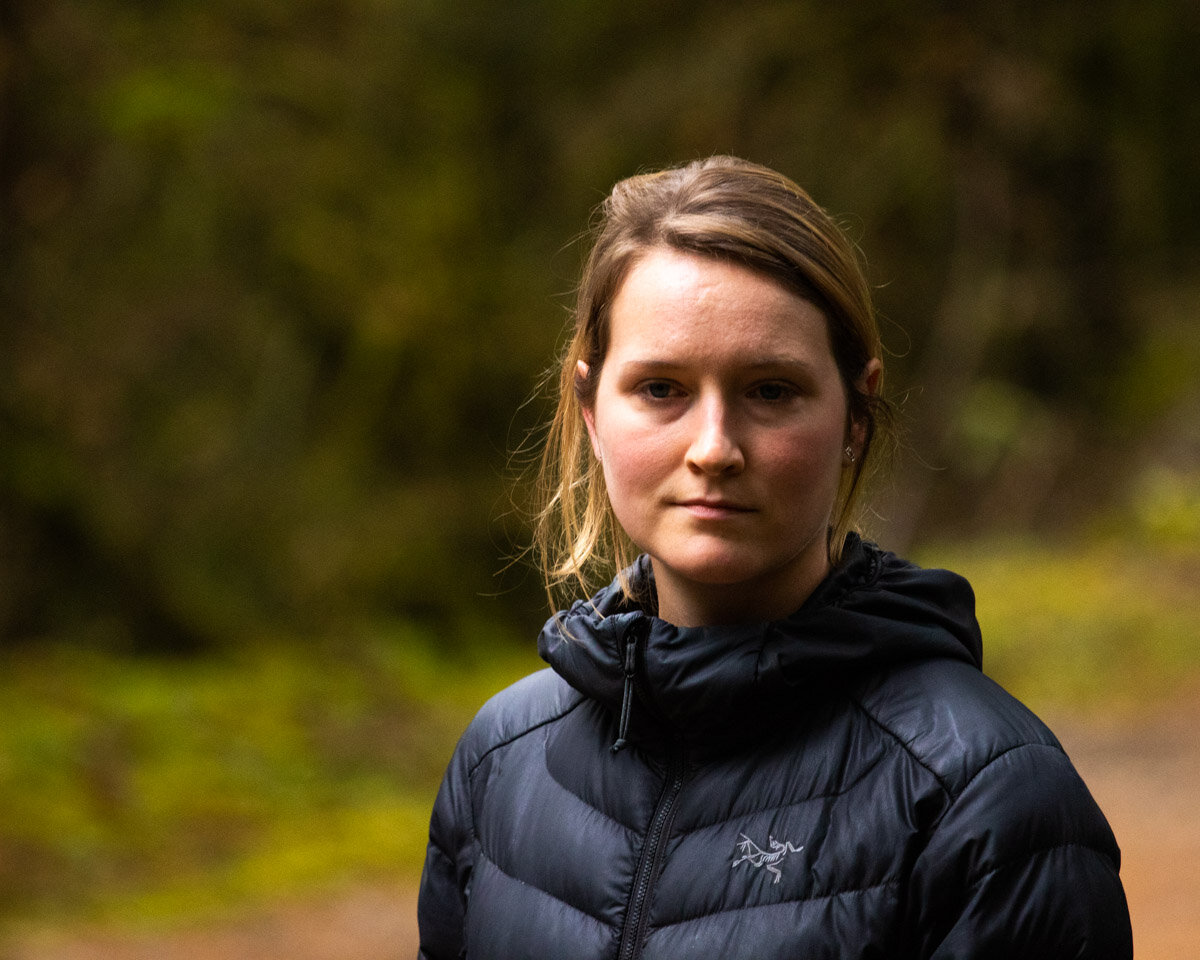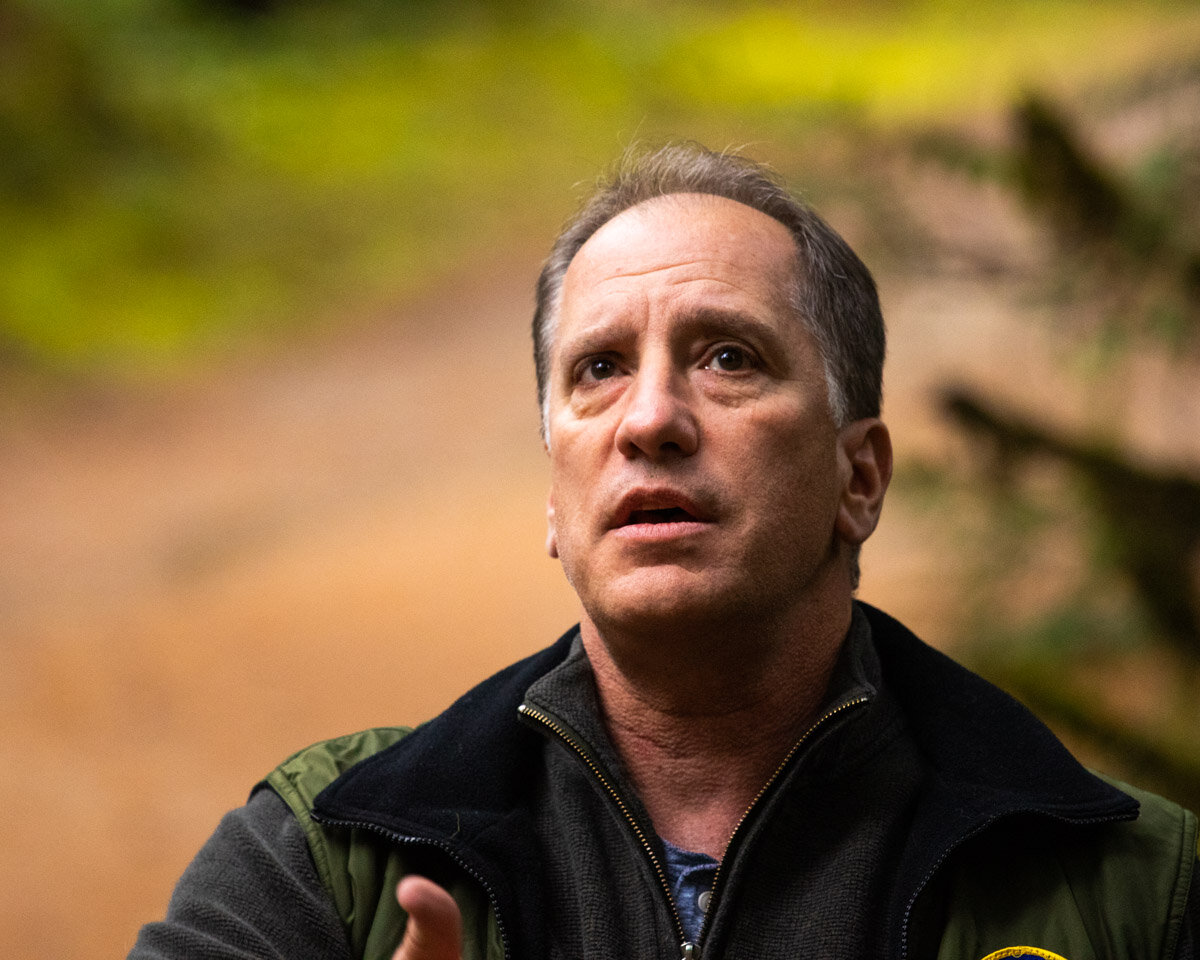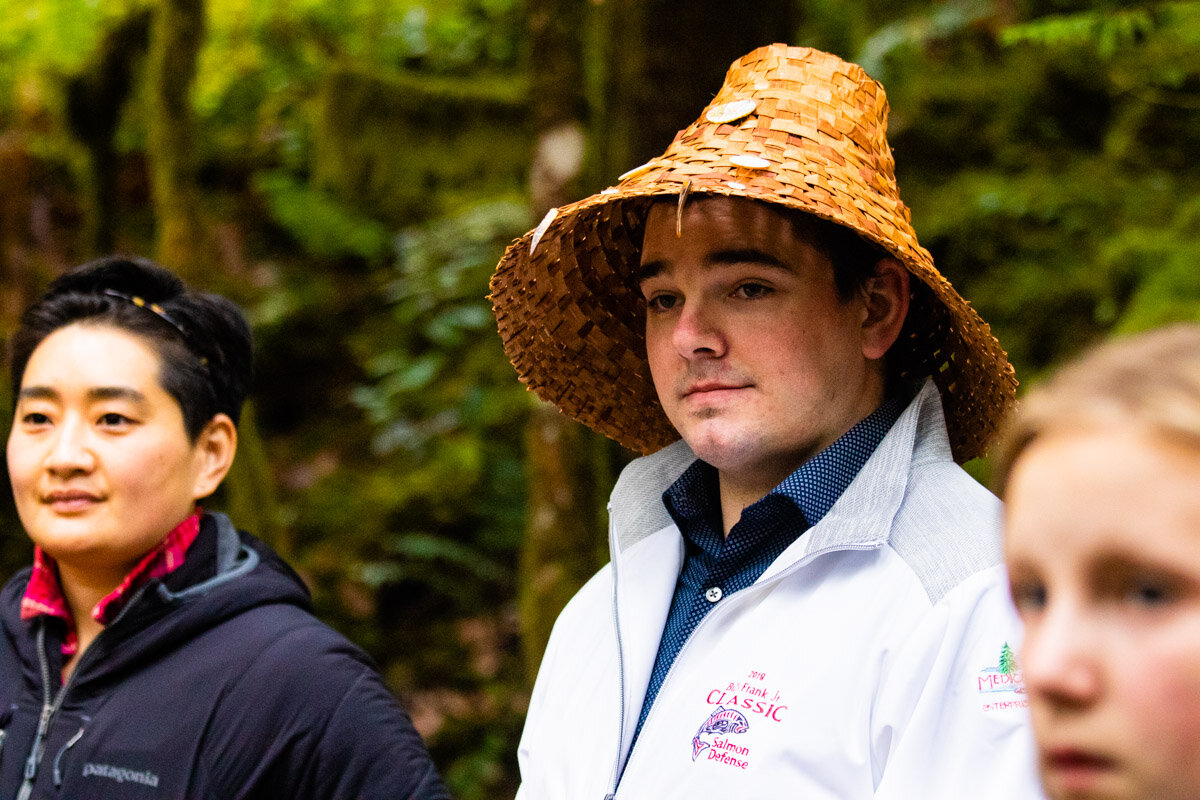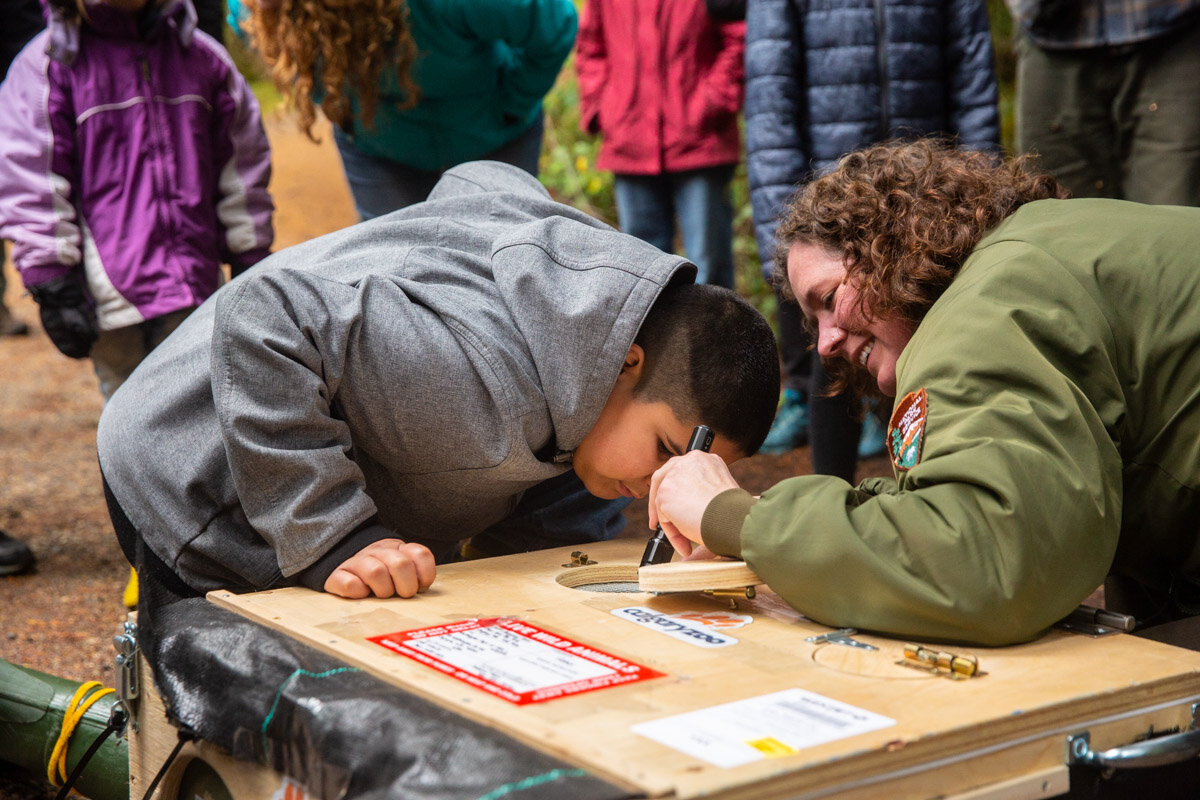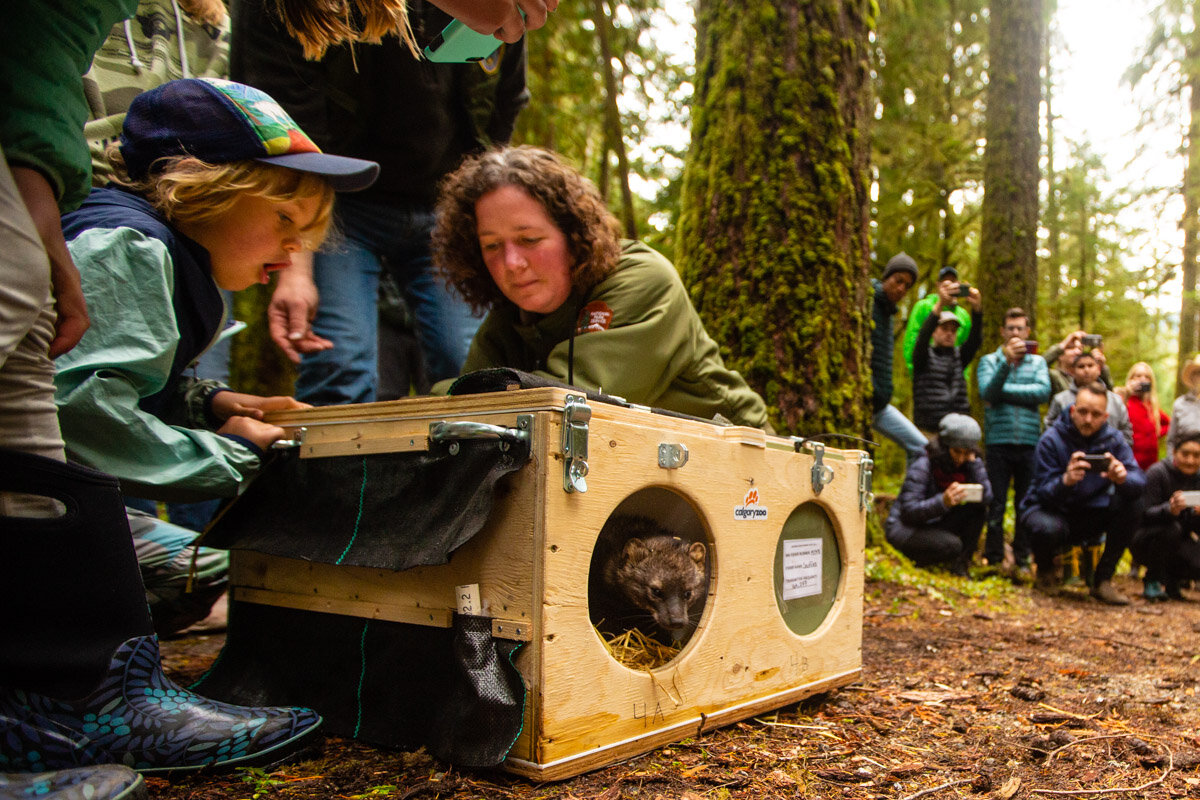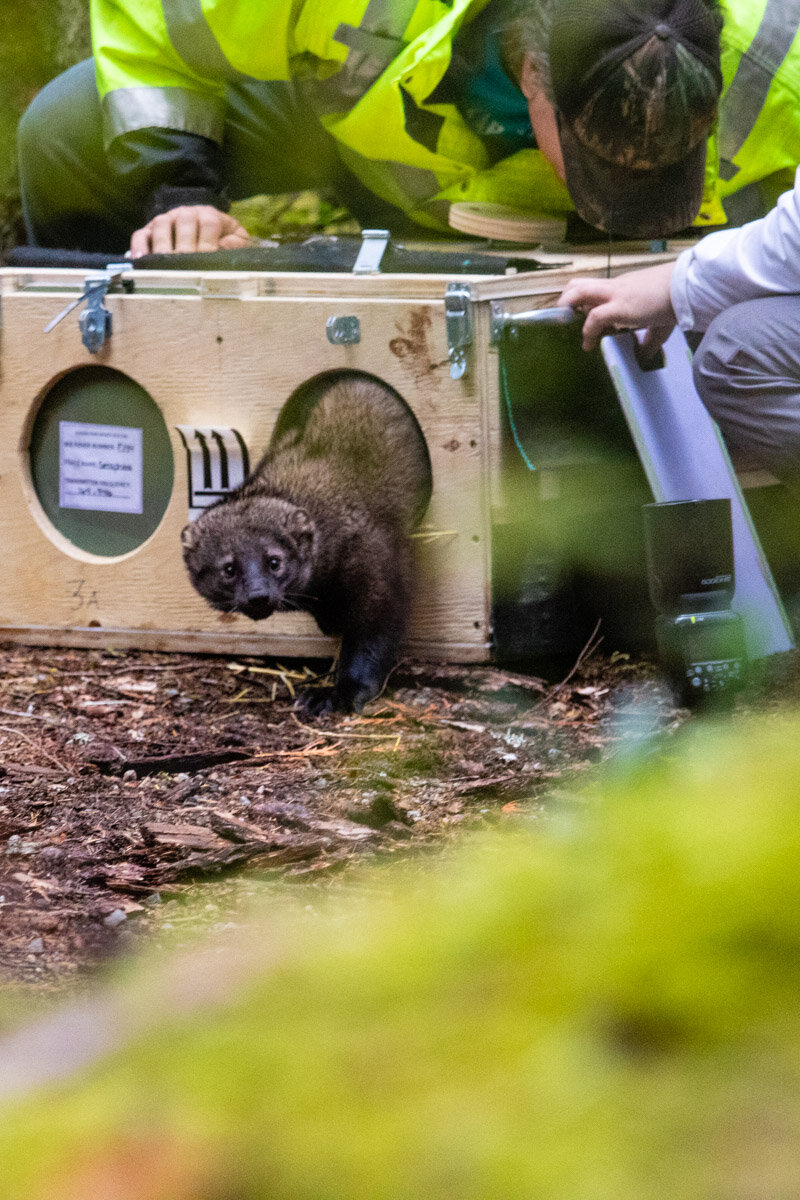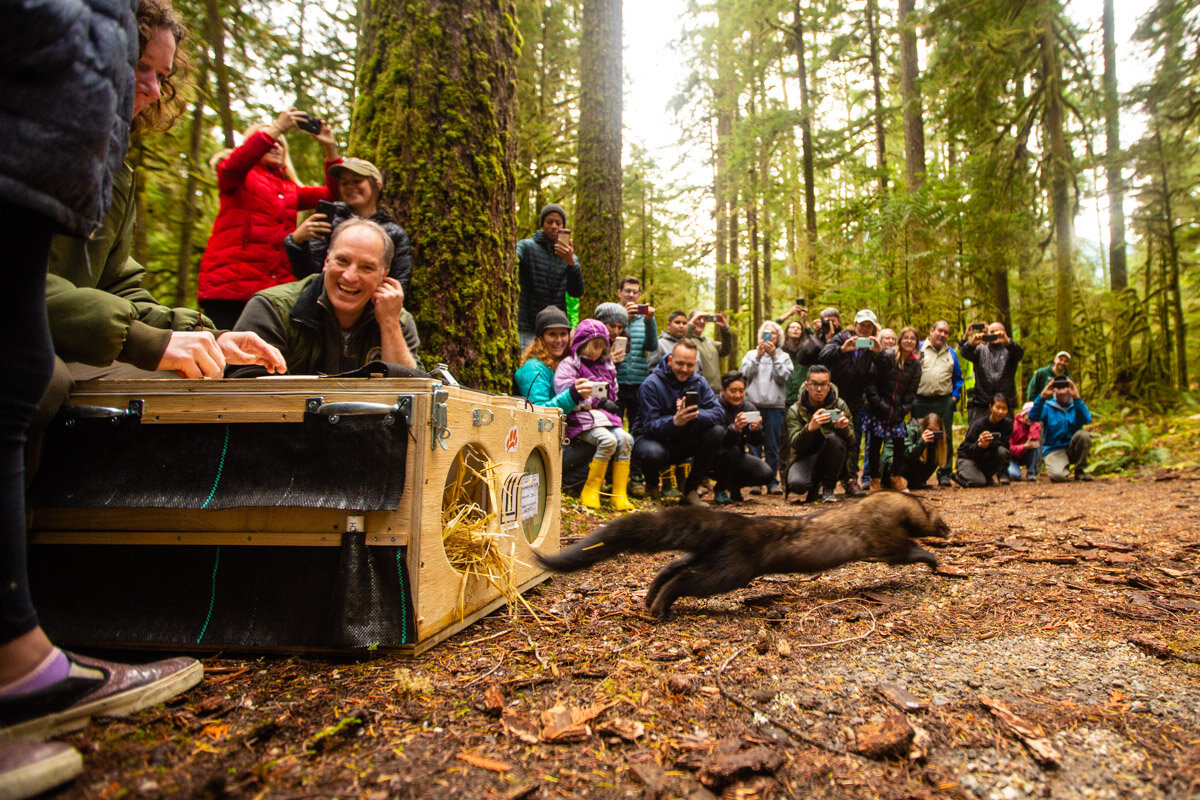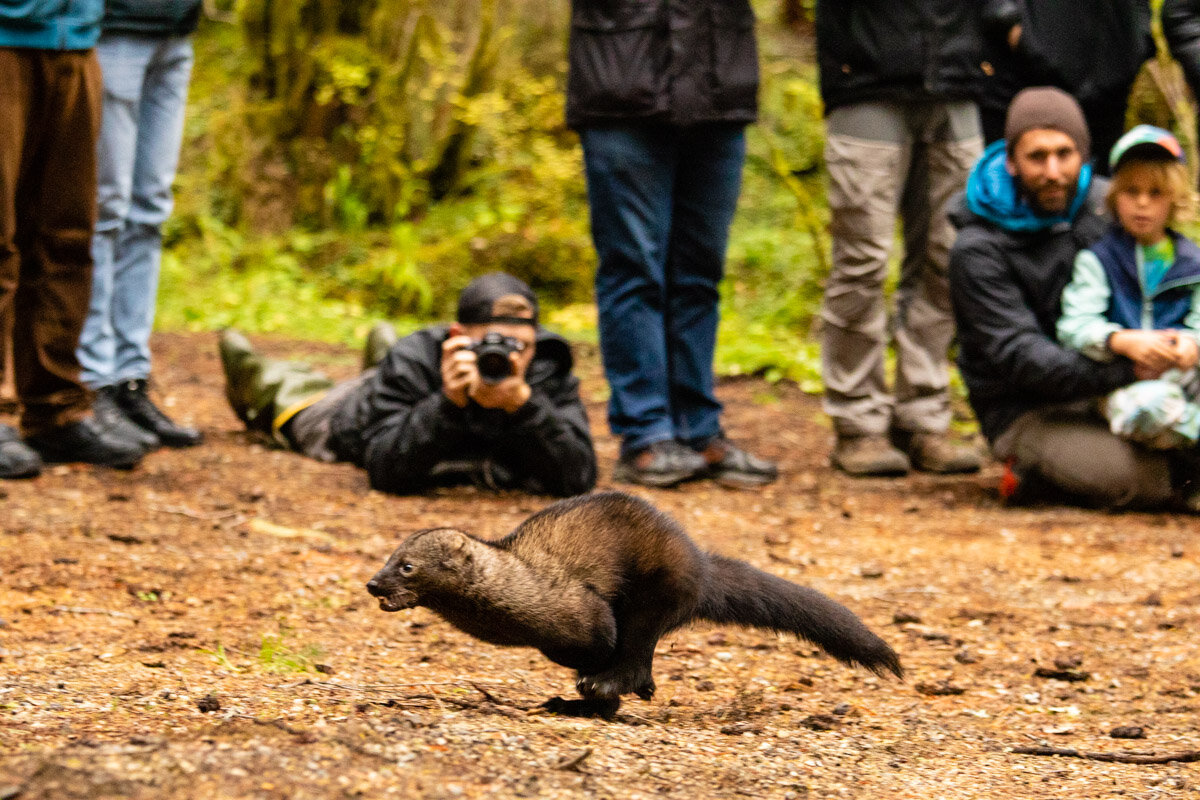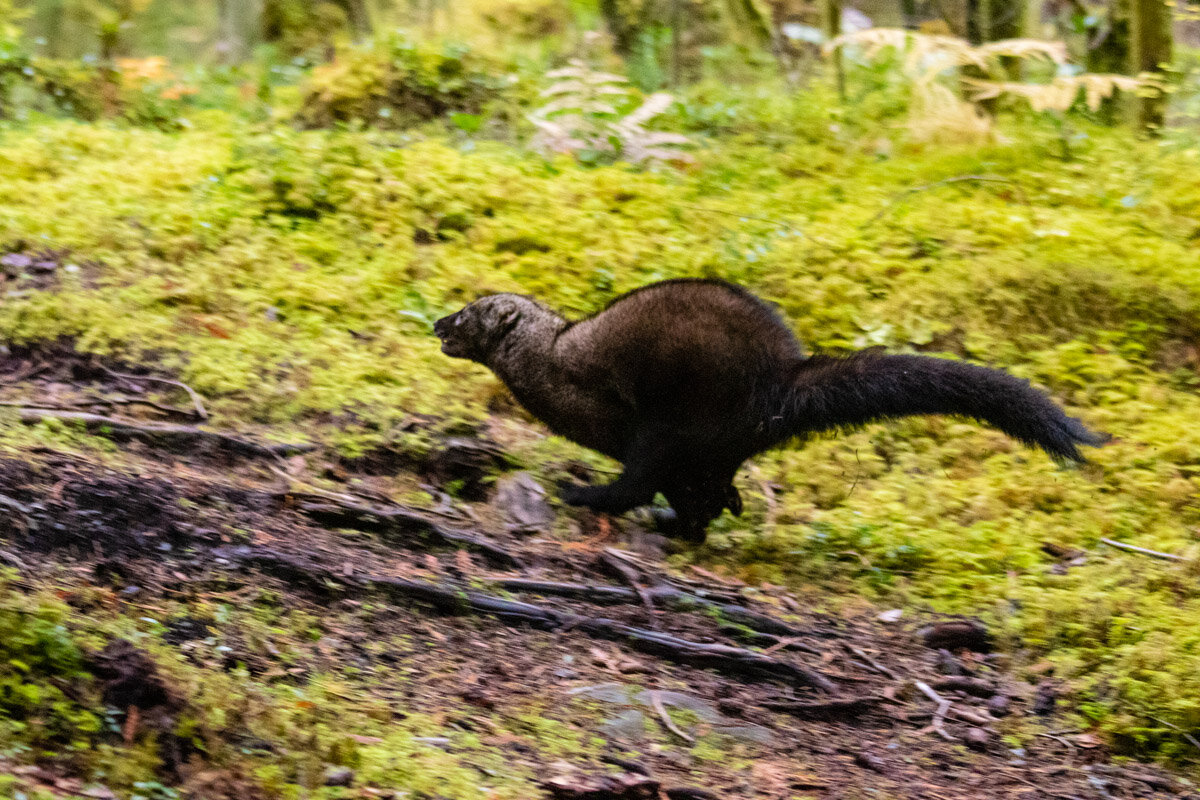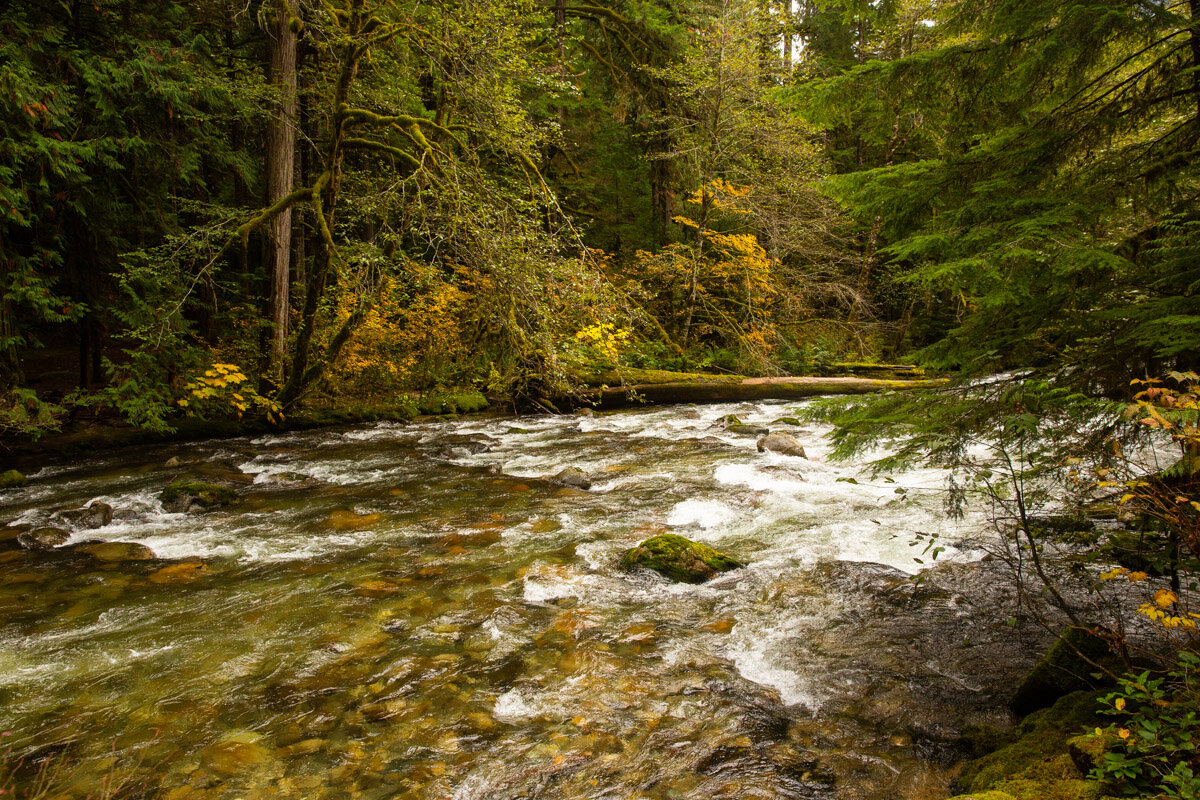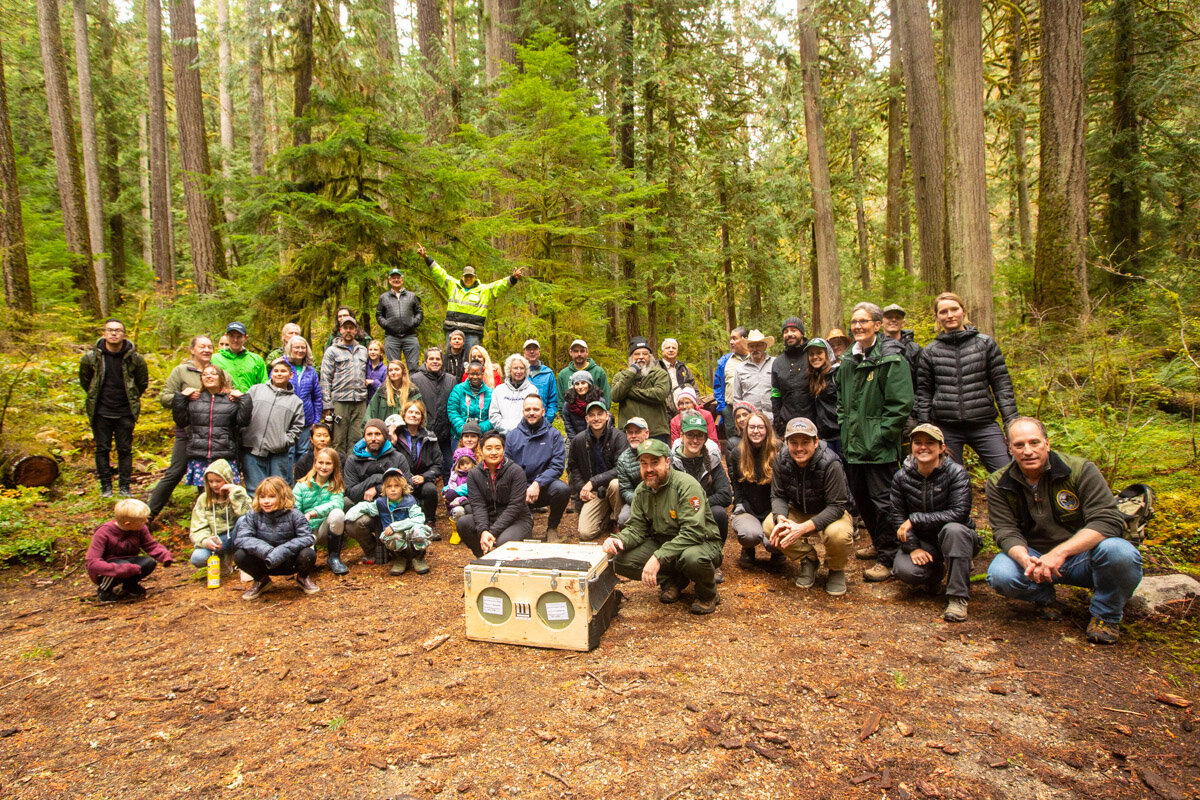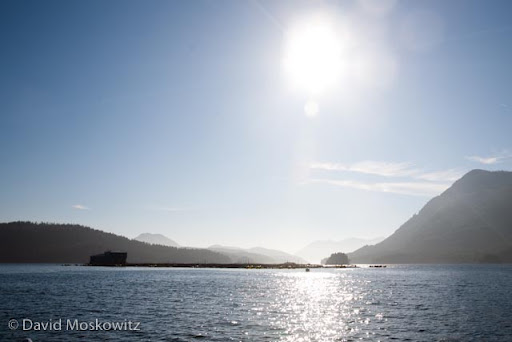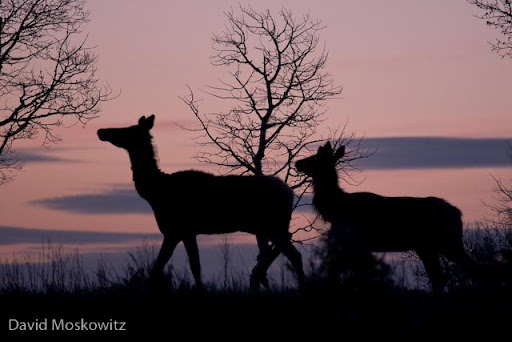This summer I spent a week traveling through central British Columbia’s Cariboo region searching for signs of fisher (Martes pennanti) and learning about why fisher populations appear to be disappearing from across much of the region. This trip was the start of field work for Echo Conservation’s Fisher Project.
Cascades Wolverine Project - Winter/Spring 2021
Fishers return to the North Cascades
A partnership between tribes, multiple government agencies in the United States and Canada, and Conservation Northwest is bringing fishers back to the North Cascades. Fisher were extirpated from the region by fur trapping and poisoning campaigns in the 1900’s. On October 24, 2019, 8 fishers were released on the traditional territory of the Sauk-Suiattle Tribe on the west slope of the North Cascades close to the town of Darrington, Washington.
Fishers Return to the North Cascades
Cascades Wolverine Project
I am excited to be starting a new collaboration this winter right in my own backyard here in the North Cascades. Cascades Wolverine Project is a grassroots effort to boost winter wolverine monitoring in the North Cascades, capture engaging images of this elusive mountain carnivore, and leverage the skills of winter backcountry recreationists as wildlife observers and alpine stewards. Learn more about the project on our website cascadeswolverineproject.org, or follow along on instagram at @cascades_gulogulo We currently have 6 camera trap installations set up on the eastside of the North Cascades for the winter and have completed our first camera check of the season. No wolverines yet but we did get some fun photos of other North Cascades critters! Along with running camera monitoring stations we will be working on developing more opportunities for backcountry skiers to get more involved in wolverine conservation in the North Cascades!
Project leader Steph Williams having absolutely NO FUN during our field work. Follow Steph on instagram at @stephwilliams9010.
Mountain Caribou Initiative: Camera Trapping for Carnivores
Text and photos by David Moskowitz Caribou are not the only animal tough to track down in the Caribou Rainforest ecosystem. As part of our efforts to tell the story of all of the creatures that call these mountains home, I have been setting camera traps this winter in collaboration with Swan Valley Connections in northwestern Montana and the Yellowstone to Yukon Conservation Initiative in the panhandle of Idaho this winter to capture images of some of the rare and elusive carnivores that depend on this wild landscape. Here are a few images from this winter field work and some out-takes of images from the camera traps.
Anything unusual about this snowmobile packing job? Researchers in Idaho and Montana are using beaver carcasses or deer legs as attractants to lure rare carnivores like Canada lynx and wolverines to bait stations set up with hair snagging devises to collect genetic samples from animals without ever having to see or handle the animals. I’ve been hitching a ride out into the field with researchers and setting up my camera traps adjacent to their bait stations.
Cody Dems (left) and Adam Lieberg set a bait station in the Mission Mountains of Montana.
Cody inspecting the fresh trail of a wolverine in Montana.
A Canada lynx enjoys some sunshine in a photo from one of my camera traps in Montana. Got many photos of this fellow in this beautiful subalpine forest. Its been many decades since caribou roamed these forests but lynx continue to call these mountains home.
A photo bombing snowshoe hare set up in front of another camera in the Selkirk Mountains in Idaho.
An American marten takes in a snowy night at the same camera trap as the snowshoe hare above.
Learn more about the Mountain Caribou Initiative here. Stay tuned for the trailer for our forthcoming film which should be out this spring. For updates on the film and other material forthcoming from the project, sign up for quarterly emails on the About page of my website.
Trailing Black Bears in the North Cascades
This spring I spent a week out in the field with several colleagues from Cybertracker Conservation honing our tracking and trailing skills following the trails of black bears on the western slope of the North Cascades. I put together a brief video describing the art of trailing and documenting some of what we discovered on our adventures in the temperate rainforest.
Interested in learning to trail bears and other wildlife? I offer custom classes in a wide variety of tracking subjects, including wildlife trailing.
Big Cats, Big Roads, and Beachfront: Out and About with the Santa Cruz Puma Project

In February I had the opportunity to spend a couple of weeks in the field with the Santa Cruz Puma Project, an ongoing research program based out of University of California Santa Cruz. Along with learning about the general biology and ecology of mountain lions, researchers and graduate students are looking specifically at how these large cats interact with human populations, neighborhoods, and roads.
The San Francisco Bay area is one of the largest metropolitan areas in the United States but still includes a matrix of open spaces and wild lands that mountain lions have managed to carve out an existence in.
The primary study area for the project is the Santa Cruz mountains which run south from San Francisco. Plant communities range from redwood forests to arid chaparral and oak woodlands.
On the eastern edge of the Santa Cruz mountains, residential areas intermix with parklands and forested mountains creating a fragmented landscape that mountain lions travel through carefully.
In order to get detailed information on the movements of mountain lions, the project live captures mountain lions and attaches a GPS collar to them.
Hounds are used to track the cat which typically climb a tree to evade the dogs. Researchers can anesthetize the mountain lion, give it a physical exam and secure a radio collar to the cat. Here roundsman Dan Tichenor has just released one of his hounds on the fresh trail of a mountain lion.
Treed mountain lion in a Pacific madrone tree.
Besides a GPS unit, the collars also include a radio signal transmitter which researchers can use to get close enough to the cat to wirelessly download data from the collar. Other collars have a transmitter which allows GPS data to be transmitted via cell service. All of the lions in the project with these collars are currently on a family plan I was told (seriously!). Here wildlife biologist Paul Houghtaling is attempting to locate a collared cat in a large stand of redwood trees.
Once the data has been collected from the collar’s the detailed geographic information collected can be used to address a wide variety of research questions.
One big question that the project is studying is about the diet of mountain lions and specifically where on the landscape they are hunting in relationship to various habitat types and levels of human presence on the landscape. Here field technician Chris Fust has used information from a collared cat to discover the remains of a deer killed by the mountain lion.
Another topic of great interest to the project and numerous other conservationists in the area are the effects of roads and highways on mountain lions ability to move around the region. I spent a day out in the field with Tanya Diamond (pictured here) and Ahiga Snyder from Pathways For Wildlife whom are studying wildlife crossings of numerous roads in the region.
Researcher Ahiga Snyder servicing a remote camera at a break in a fence adjacent to Highway 1 which wildlife have been using to access the roadway.
Sunset over the Pacific Ocean from Wilder State Park just north of Santa Cruz California. Stunning natural beauty has drawn hundreds of thousands of people to the San Francisco Bay area for decades creating the current challenges the region is facing to conserve local wild lands and wildlife but also a human population deeply invested in the outcome.
Wildlife In the Methow Valley, Viewed Remotely

This winter I have been running remote cameras of mine, and assisting the Ray Robertson and the United States Forest Service with the deployment of several others in various locations around the Methow Valley here in north central Washington. Remote cameras are considered a non-invasive research method, as they provide a means to monitor wildlife without having to handle or even directly observe them. Remote cameras greatly increases the amount of time we can monitor a location and also reduces our impact on the species we are studying by limiting the amount of time we are actually in the field in their habitat. Remote cameras, if set thoughtfully can also provide beautiful images that both document various species of wildlife while also illustrating their relationship to their environment and each other. Here is some of what we have been finding this winter here on the eastern slope of the North Cascades.
Mule deer, such as these two are one of the most conspicuous species of wildlife in the Methow Valley and show up in camera sets in many low elevation camera traps around the valley.
A young mountain lion explores the same location where the deer from the previous image had visited earlier. Other images from this camera captured both this lion and its mother in the same location.
An adult mountain lion sniffs at the buried remains of a deer which had been cached about a week before by either himself or possibly another lion that uses this area. After inspecting the area briefly, this lion moved on without retrieving anything of the buried carcass.
Golden eagle and black-billed magpie feeding on the remains of this same carcass which had been excavated by a bobcat several days earlier. In this image I had the camera looking down on the sight from an overhanging tree branch.
A group of river otters bounds along the banks of the Methow River. I set this camera at a location where I had found sign of a number of species of wildlife and the set also captured images of mountain lion, deer and beaver.
A photo of myself. As part of setting a camera trap I will trigger the camera and then inspect the images it is capturing to make sure the focal area of the camera is capturing the area I am interested in. Behind me is the remains of a mule deer that had been killed and consumed by wolves several weeks earlier. Here I am using the carcass as an attractant to draw carnivores into the range of the camera.
A pair of coyotes inspecting the carcass. They scent marked the area and then left without scavenging on the carcass.
This bobcat was more interested in getting a meal out of the deer carcass!
Even after many other visitors, a hungry wolf returned to the carcass to feed on the bones and hide that remained.
A mule deer buck captured on a Forest Service camera set by Ray Robertson and I in a location we had found tracks of wolves.
A daytime image from the same camera. The short ears and stocky muzzle of this animal identify it as a wolf.
Several weeks later, this coyote was captured at the same location, identified by its more slender build and narrow snout.
Remote camera set targeting wolves and mountain lions along a game trail. For this camera set I am anticipating the travel route of these species through my interpretation of their tracks and knowledge of how they typically travel through this particular location. I expect that I will also get photos of mule deer, and coyotes as well as possibly bobcats and red squirrels. Will keep you posted on how this one turns out…its out there right now!
Productive remote camera traps aren't just created by sticking a camera up just anywhere in the woods. It requires careful observation of tracks and signs, knowledge of the target species biology and ecology, how to use natural and imported attractants, as well as specific tricks on how to get the most out of the equipment you are using in the field. Click here to learn more about remote cameras and other non-invasive wildlife research methods. David Moskowitz provides custom trainings on many of these methods and consulting services for projects looking to employ them effectively and efficiently in the field.
A Taste of the Canadian Rockies
Banff, Jasper, and Kootenay National Parks
This July I made my first trip to the heart of the Canadian Rockies, having previously only been as far north as Waterton National Park along the Canadian-United States boarder. Joined by fellow adventurer Marcus Reynerson, we departed Seattle on a sunny Thursday, bound for some of the tallest and grandest mountains in North America.
The Kootenay River flows from the crest of the Rockies through Kootenay National Park to the west, its waters eventually joining the Columbia River and heading to the Pacific Ocean.
The massive peaks and glacier dwarf a canoe on Lake Louis, one of the most popular destinations in Banff National Park. Later in my trip I was joined by several family members who dealt admirably with my camera affliction, including here while on Lake Louis.
Wildlife of the Canadian Rockies in Banff and Jasper National Parks
Marcus and I spent a number of days exploring alpine tundra, high mountain meadows, wetlands and riparian corridors searching for tracks and signs of wildlife. Highlights included signs of black and grizzly bears, Canadian lynx, and lots of moose and elk sign. Feeding sign of several species of woodpeckers was another highlight in the dense spruce-fir forests which dominated much of the lower elevations of the mountains.
This distinctive pattern on a lodgepole pine is the work of a red-napped sapsucker which drills into the bark to get the tree to exude sap. This sap attracts insects which the sapsucker returns to feed on. Jasper National Park, Alberta.

A hoary marmot scampers along an alpine ridge. Banff National Park.

A mature bighorn sheep ram lifts his head to pick up scents on the wind. Jasper National Park, Alberta.

Clarke’s nutcrackers are ubiquitous in the subalpine forests of the Canadian Rockies. Related to crows and jays, these intelligent birds often linger where people are abundant, hoping to score a free meal.

Likely the Rockies cutest mammal inhabitant, an American pika feeds on subalpine plants on the edge of an old glacial moraine. Pika are the mountain specialists of the rabbit family. Banff National Park, Canada.
Road Ecology and Wildlife Crossing Structures in Banff National Park
Given my involvement in an ongoing research project on wildlife and road ecology in the Washington Cascades (Cascade Citizen Wildlife Monitoring Project), I was very excited to check out the crossing structures and fencing along Canadian Highway 1 which runs through the Bow River Valley in the heart of Banff National Park. The design of these structures was ground breaking work for the field and much of the design of our project in the Cascades was deeply influenced by this project.

A number of crossing structures both over and under the TransCanadian Highway in Banff National Park allow wildlife to cross the highway and decrease the risk of wildlife getting hit by vehicles along the highway. Highways such as this can be a major obsticle to movement of many species across the landscape.

Fencing to keep wildlife off of the road along with crossing structures such as this wildlife overpass are part of contemporary efforts to reduce the impacts of roads on wildlife movement in critical habitat. Canadian Highway 1 in the Bow Valley, Banff National Park, Alberta.
Astounding mountain scenery
Find a few more images from my trip to the Canadian Rockies in my photography galleries.

Still water reflects the evening light and mountains above Maligne Lake. Jasper National Park, Alberta.
Another Look at Northern Flying Squirrel Tracks
Perhaps because of the forest habitat they occupy and tendency not to travel for long distances on the the ground, clear footprints of the northern flying squirrel (Glaucomys sabrinus) have rarely been detected in the wild, or at least rarely documented. I personally have never definitively identified this species's tracks in any substrate other than loose snow. As such producing reliable illustrations for the tracks of flying squirrels is challenging. In writing my field guide I had less direct field data on this species than any other mammal species whose tracks are illustrated in the book. The illustrations, measurements and description of northern flying squirrel tracks in Wildlife of the Pacific Northwest are based on the following data sources:
- Snow tracks found in conjunction with definitive flying squirrel sign, typically the landing mark at the end of a glide.
- A plaster cast of a number of tracks of a single flying squirrel which was collected for me by Kevin Mack, at PAWS in Lynwood, WA from a captive female northern flying squirrel which was being rehabilitated for release there.
- Sketches, notes and photographs I took from study skins of northern flying squirrels from the Mammalogy Collection at the Burke Museum of Natural History and Culture at the University of Washington.
- Photographs and illustrations of the tracks and signs of this species from other wildlife tracking literature, (all included in the bibliography of my field guide).
In the spring of 2012, while delivering a Tracking Certification with Dr. Mark Elbroch, author of a number of books on wildlife tracks in North America, Mark offered me the feedback that his most recent research on this topic suggests that his original depiction of northern flying squirrel feet in Mammal Tracks: A Guide to North American Species, along with my own are inaccurate. In Mark Elbroch's most recent book, co-authored with Jonah Evans and Michael Kresky, Field Guide to Animal Tracks and Scats of California, the authors present a revised illustration of the tracks of this species based on their inspection of study skins and footprints collected from sooted track plates. Following this conversation, I revisiting my own original research materials, as well as the literature and made a follow up trip back to the Burke Museum, where I reexamined study skins as well as a fresh specimen which was waiting to be processed.
As Elbroch, Evans, and Kresky depict, northern flying squirrels do have a distinctive, though subtle, anatomical feature in their hind feet which is unique among squirrels in the Pacific Northwest and California. Toe number 5, the outside toe, is longer than is typical for squirrels or other rodents. Inspecting the actual feet of a frozen flying squirrel as well as numerous study skins, this toe, while not quite as long as the central three toes is nearly so, and visually apears in a similar plane to them, while toe 1 is distinctly shorter and falls on a seperate plane. This feature is present in the tracks collected from the sooted track plate which is published in Elbroch, Evans and Kresky. While the only clear tracks in a natural substrate I have been able to examine, those of the captive animal's which were collected in sand, do not show this characteristic as distinctively as it appears in sooted track plates and on the actual feet themselves, I suspect that it would likely often be apparent in tracks in natural substrates. This characteristic, not currently illustrated or described in Wildlife of the Pacific Northwest, could be used to distinguish the tracks of this species from the related Douglas (Tamiasciurus douglasii) and red squirrels (Tamiasciurus hudsonicus) which share the Pacific Northwest and much of the rest of North America with northern flying squirrels.
Because there is such limited data on this topic, I have included photographs and sketches from my research for review by others. Similarly, if others have photographs, sketches or access to northern flying squirrel's I would love to see their material and explore this subject further. Thanks much to Jeff Bradley at the Burke Museum, and the Burke Museum in general, as well as Mark Elbroch for their assistance with this topic.
The left hind foot of a frozen northern flying squirrel (Glaucomys sabrinus) from the Burke Museum’s Mammalogy Collection. Note that toe 5 is nearly as long as toes 2-4, while toe 1 is distinctly shorter.
Rubbings made from a plaster cast of the tracks of a captive northern flying squirrel in sand. Collected by Kevin Mack at PAWS in Lynwood Washington. Various feet are labeled.
A digital drawing over the rubbings to help enhance the appearance of the structure of the tracks.
Original notes and sketches from my book research on the species from 2009.
Notes and sketches from my research at the Burke Museum from 2012.
Wildlife Tracking in the Tatra Mountains of Slovakia
In late September, the Slovak Wildlife Society hosted a weekend Wildlife Tracking Workshop in Liptovský Mikuláš, a village in the Tatra Mountains of Slovakia. The Slovak Wildlife Society is involved with a range of conservation projects focusing primarily on the region's large carnivores including working to prevent negative interactions between wolves and bears with humans. Here are a few of the highlights from my trip to the region and the class with a collection of very fine European naturalists and wildlife trackers.
My initial impressions of northern Slovakia during my train ride through the country was that it reminded me much of the state of Montana, with the notable addition of castles.
Tracks of a European Red deer (Cervus elaphus).
The right hind track of a European Brown Bear (Ursus arctos).
European river otter (Lutra lutra) tracks.
European lynx (Lynx lynx) track. Tatra Mountans, Slovakia.
A spring in the forest used extentively by Wild Boar as a wallow. Tatra Mountains, Slovakia
A tree close to a spring wild boar’s use as a wallow. Robin Rigg, Slovak Wildlife Society Founder and Director, inspects the scar and mud on the base of the tree is from repetitive rubbing from boars on the tree. Tatra Mountains, Slovakia.
A red fox moves through the brush in morning light. Tatra Mountains, Slovakia.
Participants in the wildlife tracking workshop Slovak Wildlife Society hosted.
Evening light in the Tatra Mountains, Slovakia.
Freeloading Chicken Update

"Dave- I checked the White Pine camera on Sunday the 20th after two weeks, got about 640 shots of a Pine Marten, two grey jays, and a few wind triggers. I replaced the batteries, card, bait and scent. It only took that Marten two days to get all the bait."--Pete Jenkins
The Curious Case of the Freeloading Chicken and the Wolverine
This weekend, following up on several sets of likely wolverine tracks biologist and backcountry skier Pete Jenkins discovered, a small group of intrepid citizen scientists set out to place a remote camera in the vicinity in hopes of capturing a photo of the illusive carnivore. Grey skies and a very thin coat of fresh snow beckoned.Clouds covered the high peaks of the Chiwakum mountains south of Highway 2 in the Washington Cascades when the group met early Saturday morning. For the project, a few unusual items were called for, not usually included in the field kit of backcountry skiers: a hammer, some chicken wire, a motion sensitive camera, and, much to my chagrin, a frozen chicken and the contents of the scent glands of a beaver (these two items ended up in the bottom of my backpack). More typical of such a ski trip, Samantha Goff insisted on the addition of a can of Pabst Blue Ribbon Beer to each of our packs (see my blog post on climbing around the Eldorado Massive, http://davidmoskowitz.blogspot.com/2009/08/climbing-in-north-cascades.html, for background on Sam and PBR).We departed bright eyed and bushy tailed as heavy wet snow fell, providing some reprieve from the hard raincrust. A couple of hours later, a gain of 2000' elevation, skinning on an old logging road and then up through uncut mixed conifer forest, had left us quite wet and me feeling a bit upset about the freeloading chicken weighing me down.Pete identified the location he had determined would be the best spot to set up the camera based on prievious track sightings and how animals general moved across this particular set of drainages descending from a large alpine cirque above. Not a minute too soon. I was totally fed up with my chicken (and had a sneaking suspicion it might be leaking chicken juice into my pack.
Writer Chase Edwards (http://poboxtheeurovan.blogspot.com/) looks on nervously as Pete attaches the bird to the tree.
Pete attaching the chicken, wrapped in chicken wire, securely to the bait tree with remote camera in background.
Chase unwrapping the strong smelling scent lure.
Chase, clearly relishing the opportunity to smear the bait tree with beaver castorum, an irresistible scent for many creatures.
Chase and Sam celebrating a job well done. Much of the skiing that followed, while punctuated by (brief moments of) fine turns, might otherwise be described much like dancing with a partially frozen chicken across a floor of slide alders, avalanche debris, and thinly covered raincrust. Stay tuned here for photos we get from the camera!
Clayoquot Sound, B.C.
Wolf tracks along west coast of Vancouver Island, British Columbia.
Bald eagle above a foggy forest.
Carcass of juvenile humpback whale on beach of island in Clayoquot Sound
Racoon foraging for sand flees on beach of island in Sound
Black-tailed deer feeding on seaweed on island in Clayoquot Sound.
River otter scent marking on seaweed as tide goes out.
Black bear foraging for invertebrates in the intertidal zone by rolling rocks.
Large Sitka spruce in ancient forest on island in the Sound.
A gray wolf trots along the beach early in the morning with ravens in the background. West Coast, Vancouver Island.
Tofino Inlet, Clayoquot Sound.
Harbor seals lounging at low tide.
Atlantic salmon fish farm in Clayoquot Sound with uncut forest in background. Several rivers with no clearcuts or roads in them are seeing massive declines in salmon numbers due to sea lice and other issues associated with fish farming in the Sound. The smell is overwhelming, far worse than a dairy farm and totally shocking in such a wild setting.
Active clearcut logging in Clayquot Sound. Top of the photo is uncut oldgrowth. Bottom is regrowth from a previous clearcut.
Growth rings: over 200. Destination: ?
Huge western red ceder stump set amidst second growth forest of planted Douglas firs. Note that the original nurse log that the ceder tree started growing on in still under the stump, attesting to the volume of biomass in the previous ancient forest and the literally centuries it took to create the structural diversity so important to many Old growth obligate species.
Despite decades of conservation efforts, Clayoquot Sound, a UNESCO Biosphere Reserve, faces numerous severe threats to its ecological integrity including clear cut logging of roadless old growth forests, industrial Atlantic salmon fish farms, and proposed open-pit copper mining. Learn more about the region and how you can support conservation in the region at the following websites:Friends of Clayoquot Sound Clayoquot Biosphere Reserve First Nations Environmental Network
Western Colorado: Aspen forests and Wildlife of the High Lonesome Ranch
Aspen stand at about 8500′ elevation on the western edge of the Rocky mountains
Aspen stand with bear climbing marks and elk cambium feeding scars on trees in the foreground. Many aspen stands in the southern Rockies are dying for reasons that are not yet totally clear. Aspen stands are generally comprised of one or a few individual organisms (called “Clones”) each of which sends up multiple trunks. About half of the mature trunks in the patch are dead.
Entrance and throw-mound of a bear den found on a steep forested northwest facing slope close to a ridge line at about 8200′ elevation.
Close up of the internal chamber of the den. The den was only about 4′ deep
Dewitt Daggett gets a close look at the den.
Rocky mountain elk at sunrise with stunted aspen in the background.
Incisor marks from an elk feeding on the bark of an aspen. Barking of aspens by elk can have extensive impacts on aspen stands. Along with the bark, elk, deer and cattle also feed on the branch tips of saplings stunting their growth and retarding recruitment of young trees where browsing pressure is intense.
A red-naped sapsucker paused from excavating a new cavity in a dead aspen tree. Cavities excavated by woodpeckers are used by a wide variety of other birds and mammals as nests once abandoned by the woodpecker.
A female Purple Martin looking out from its nest cavity in a standing dead aspen tree. In this same tree was also a nest cavity being used by a house wren.
Female and male Purple Martins courting close to their nest cavity.
Female collecting dead aspen bark to line her nest cavity.
Mule deer resting in the shade of a Douglas fir during the midday heat.
Large scrape made by a mountain lion under a large Douglas fir at along a ridge. This scrape has been visited and enlarged over repeated visits by the cat. Scrapes such as these are a scent marking behavior performed by both bobcats and cougars.
Looking northwest across the western edge of the Rocky Mountains at sunset.
Sunset and aspens
..



